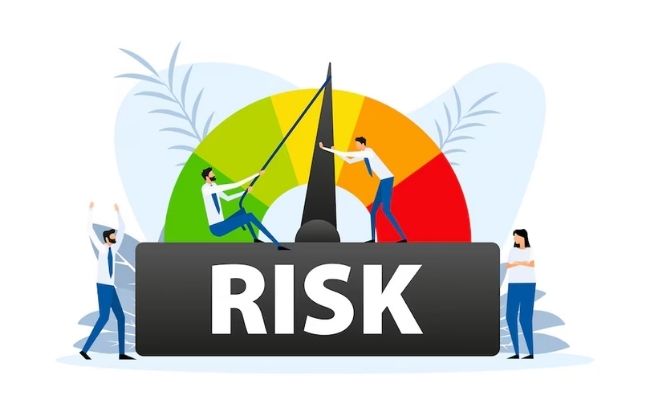Introduction
Once risks are identified, the next step in the risk management journey is to assess and prioritize them. Without proper evaluation, businesses risk focusing on the wrong threats—or spreading resources too thin.
Risk assessment and prioritization are essential for making informed decisions, allocating resources wisely, and strengthening organizational resilience. This guide will show you exactly how to do it, with methods, tools, and expert strategies every professional should know.
Why Risk Assessment Matters
Not all risks are equal. Some may cause minor delays; others could lead to massive financial losses or reputational damage. Assessing risks helps organizations:
- Measure potential impact and likelihood
- Focus on the most critical issues
- Justify budget and resource allocation
- Develop effective mitigation strategies
Prioritization transforms insight into action.
The Goals of Effective Risk Prioritization
- Clarity: Understanding which risks truly matter.
- Efficiency: Avoiding unnecessary focus on minor issues.
- Preparedness: Planning for the most damaging and most likely risks.
- Leadership Confidence: Enabling executives to make bold but informed decisions.
By placing risks in order of significance, you bring logic into what can often feel like chaos.
Step 1: Establish a Risk Assessment Framework
Before assessing individual risks, define how your organization will assess all risks consistently.
Consider:
- Scales for Impact and Likelihood (e.g., 1 to 5)
- Definitions for Each Rating Level
- Alignment with Company Strategy and Values
- Assessment Frequency (e.g., quarterly, annually)
Having a common language and framework ensures consistency and fairness in evaluation.
Step 2: Evaluate Likelihood (Probability)
This refers to the chance that a risk will occur. It’s usually scored on a scale such as:
1. Rare
2. Unlikely
3. Possible
4. Likely
5. Almost Certain
Tips for measuring likelihood:
- Use historical data
- Consult with subject matter experts
- Analyze trends and patterns
- Consider external and internal triggers
The more objective your input, the better the result.
Step 3: Evaluate Impact (Consequence)
Impact is the extent of damage a risk would cause if it materialized. Score it similarly:
1. Negligible
2. Minor
3. Moderate
4. Major
5. Catastrophic
Impact categories to assess:
- Financial loss
- Operational disruption
- Reputational damage
- Safety or compliance violations
- Strategic setbacks
Impact can vary by department or location—context is key.
Step 4: Use a Risk Matrix
A Risk Matrix combines likelihood and impact into a visual tool. Risks are plotted in a grid, with cells colored to represent priority (e.g., red for high risk, yellow for medium, green for low).
How it helps:
- Makes risk visibility easier for stakeholders
- Simplifies prioritization
- Aids in setting risk tolerance and appetite
Risk matrices help transform raw scores into compelling visuals for decision-making.
Step 5: Consider Velocity and Detectability
Two often-overlooked factors can sharpen your prioritization:
- Velocity: How fast a risk will impact your business once triggered.
- Detectability: How easy it is to spot the risk before it escalates.
Example:
- A cyberattack may be high impact, high velocity, and low detectability — hence top priority.
These additional dimensions enhance your assessment beyond just likelihood and impact.
Step 6: Conduct Risk Scoring or Ranking
Calculate overall risk scores (e.g., Likelihood × Impact), then rank all risks in descending order.
You can also use weighted scoring:
- Assign more weight to risks affecting strategy or compliance.
- Adjust scoring formulas based on business unit or geography.
Risk registers should reflect these rankings for transparency and planning.
Step 7: Engage Cross-Functional Stakeholders
Risk prioritization is not a solo exercise. Collaborate with:
- Department Heads for operational relevance
- Finance Teams for cost estimation
- Legal/Compliance for regulatory concerns
- IT and Cybersecurity for technical input
Different departments may perceive the same risk differently—collective input creates a holistic view.
Step 8: Categorize and Cluster Risks
Group risks by theme to identify systemic vulnerabilities. Common categories include:
- Strategic vs Operational
- Internal vs External
- Controllable vs Non-Controllable
Clustering helps allocate mitigation efforts efficiently and identify root causes.
Step 9: Document and Share Results
Ensure findings are:
- Recorded in your risk register
- Shared with relevant teams
- Presented to leadership in decision-friendly formats
Use visuals, charts, and scorecards to communicate clearly.
Step 10: Update Regularly
Risks evolve—so must your assessments. Regular reviews ensure continued relevance.
Best practice:
- Schedule quarterly or semi-annual reviews
- Monitor changes in the business, market, or regulatory environment
- Refresh scoring with new data or expert insights
Common Pitfalls to Avoid
- Relying solely on subjective opinions
- Using inconsistent scoring criteria
- Ignoring fast-moving or hard-to-detect risks
- Failing to link prioritization with action planning
Avoiding these mistakes will improve both the accuracy and usefulness of your risk priorities.
Advanced Tools to Support Assessment
- Monte Carlo Simulations: Model risk impact using probability ranges
- Bowtie Diagrams: Visualize cause and consequence relationships
- GRC Platforms (e.g., LogicManager, MetricStream): Automate scoring, alerts, and documentation
These tools can save time and improve consistency in high-risk or data-rich environments.
Explore Best Online Courses to Learn Risk Management
If you’re new to risk management or looking to deepen your expertise, there’s no better time to start than now. Learning from industry experts can help you build a strong foundation and gain certifications that set you apart in the job market.
At www.smartonlinecourse.com, in collaboration with the Risk Management Association of India (www.rmaindia.org), you can explore a range of self-paced, affordable online courses designed for both beginners and professionals. These courses are tailored to real-world needs, taught by experts, and designed for flexible learning.
Visit www.smartonlinecourse.com to explore more!
Email: info@smartonlinecourse.org
Conclusion
Effective risk assessment and prioritization aren’t just technical exercises—they’re strategic imperatives. By applying structured frameworks, visual tools, and collaborative methods, organizations can focus energy where it matters most.
With the right approach, professionals can turn uncertainty into strategy, and threats into opportunities.


